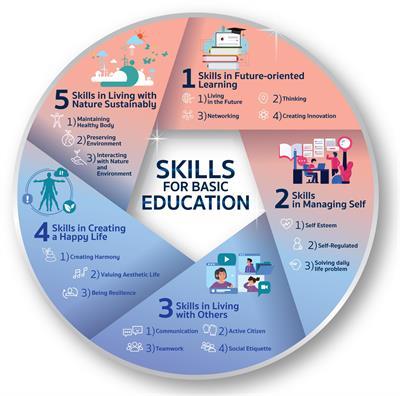Curriculum Designer: Key Roles, Skills, and Career pathways in Education Technology
Introduction
As education technology reshapes the learning landscape, the demand for innovative curriculum designers at universities, colleges, and schools is rapidly rising. Whether you’re an experienced educator or an aspiring professional, learning about the roles, key skills, and potential career pathways of a Curriculum Designer in EdTech can set you on the path to a meaningful career. This thorough guide covers everything you need to know to jumpstart or advance your journey as a curriculum designer in the dynamic field of educational technology.
What is a Curriculum Designer in Education Technology?
A Curriculum Designer, also known as an instructional designer or learning architect, specializes in developing educational content, digital learning experiences, and innovative teaching strategies tailored to various levels—ranging from K-12 to higher education. Within the EdTech sector at universities, colleges, and schools, curriculum designers bridge the gap between pedagogical theory and technology-enabled educational solutions.
Primary Responsibilities
- Conducting needs assessments with faculty and administrators to identify learning goals and gaps.
- Designing, developing, and revising digital curricula and instructional materials aligned with academic standards.
- integrating educational technology tools such as learning management systems (LMS), interactive media, and virtual classrooms.
- Collaborating with subject matter experts (SMEs), educators, and IT teams to ensure content accuracy and engagement.
- Creating assessment strategies and instruments to evaluate learner progress and instructional effectiveness.
- Providing training and support to teachers and faculty on new instructional resources and EdTech platforms.
- Staying updated with industry trends, emerging technologies, and best practices in curriculum design.
Key Skills Required for Curriculum Designers in EdTech
Success as a curriculum designer at universities, colleges, or schools requires a balanced blend of pedagogical expertise, technological savvy, and collaborative skills. Here are the most sought-after competencies for landing a job in this field:
Essential Skills
- Instructional Design Expertise: Familiarity with learning theories such as Bloom’s Taxonomy, Global Design for Learning (UDL), and ADDIE (Analyze, Design, Develop, Implement, Evaluate) model.
- technological Proficiency: Experience with modern EdTech tools including LMS (like Canvas or Blackboard), authoring tools (Articulate storyline, Adobe Captivate), and collaborative software.
- Project Management: Ability to manage multiple projects, set timelines, and prioritize tasks in a fast-paced educational environment.
- Content Creation and Adaptation: Skill in developing original materials and adapting existing resources for various digital formats and diverse learner needs.
- Analytical Abilities: Capacity to use data-driven insights to improve curriculum effectiveness and optimize learning outcomes.
- Interaction and Collaboration: Aptitude for working closely with faculty, instructional technologists, and other stakeholders.
Educational Requirements and Certifications
A curriculum designer typically holds a bachelor’s or master’s degree in education, instructional design, curriculum progress, or a related field. Advanced knowledge in educational technology is highly desirable. Credentials that enrich your candidacy for EdTech curriculum roles include:
- Master’s degree in Instructional Design, Educational Technology, or Curriculum and Instruction
- Professional certifications, such as Certified Professional in Learning and Performance (CPLP), or an eLearning Instructional Design Certificate
- Relevant work experience in teaching, instructional technology, or digital content development
Career Pathways for Curriculum Designers in Universities, Colleges, and Schools
The education technology sector offers diverse advancement opportunities for curriculum designers. Here’s an overview of typical career trajectories:
Entry-Level Roles
- Instructional Design Assistant
- eLearning Developer
- Curriculum Specialist
Mid-Level Positions
- Curriculum Designer / Instructional Designer
- Digital Learning Specialist
- Learning Experience Designer
Senior-Level and Leadership Roles
- Senior Curriculum Designer
- Instructional design Manager
- Director of curriculum and instruction
- Chief Learning Officer (CLO)
with industry growth fueled by online education, blended learning programs, and constant technological innovation, skilled curriculum designers have excellent prospects for upward mobility within universities, colleges, and schools.
Benefits of a Career as a Curriculum Designer in EdTech
- Impact: Directly influence student engagement and success by shaping modern learning experiences.
- Job Security: Continuous demand as educational institutions invest more in technology-driven solutions.
- Flexibility: Opportunities for full-time, part-time, and even remote curriculum design roles.
- Creative Fulfillment: Space to innovate,experiment with new pedagogical approaches,and leave a unique mark on education.
- Professional Growth: Regular opportunities to expand into leadership, project management, or specialized EdTech consultancy roles.
Practical Tips for Job Seekers Pursuing Curriculum Design Roles in Education Technology
Thinking of applying for curriculum designer positions at universities, colleges, or schools? Here are actionable steps to enhance your prospects and stand out:
1. Build a Strong Portfolio
- Showcase sample lesson plans, digital modules, multimedia learning objects, and assessment tools.
- highlight projects that demonstrate your ability to integrate technology and innovative teaching strategies.
2. Gain Relevant experience
- Volunteer for curriculum revision committees,EdTech pilots,or eLearning initiatives.
- Explore freelance or contract curriculum design opportunities.
3.Stay Current with Trends and Tools
- Attend webinars, online courses, and conferences focused on instructional technology and digital pedagogy.
- Experiment with new authoring tools, LMS platforms, or interactive resources.
4.network with Education Technology Professionals
- Join professional associations and online communities for instructional designers and curriculum developers.
- Connect with university or school EdTech teams to learn about potential openings and career pathways.
5. Master Key Educational Standards
- Understand frameworks such as ISTE Standards for Educators or Next Generation Science Standards (NGSS) as they pertain to curriculum development.
- Stay aware of local and national guidelines relevant to your target institutions.
Conclusion
A career as a Curriculum Designer in education technology at universities, colleges, or schools offers a unique opportunity to shape the future of learning. By developing innovative curricula, integrating technology with pedagogy, and collaborating with forward-thinking educators, curriculum designers stand at the forefront of educational transformation. If you are passionate about fostering student engagement and lifelong learning, and ready to leverage the power of EdTech, pursuing a curriculum designer role in academia coudl be your next rewarding career move. Take proactive steps today—hone your skills,build your portfolio,and immerse yourself in the world of educational innovation.

